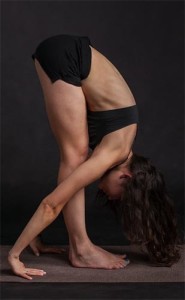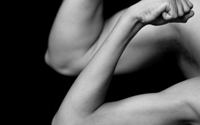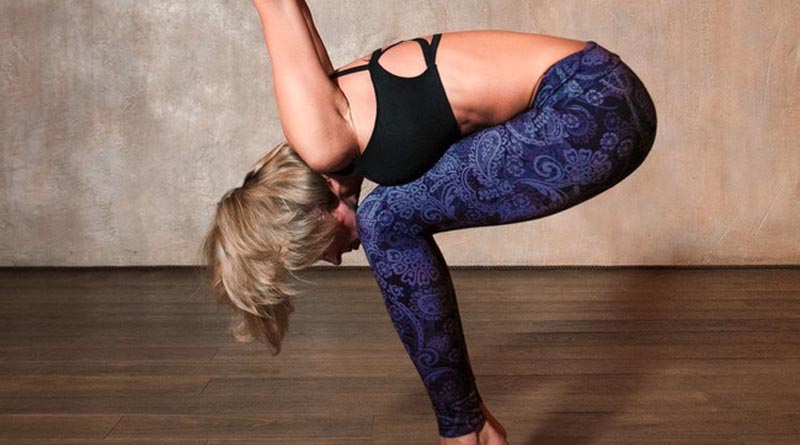JOINT CARE
Wear and tear on the joints of the body is one of the reasons why many of us feel old and creaky as we age. It might start with a painful twinge in the knee – or perhaps some stiffness in your fingers.
In healthy joints, cartilage acts as a cushion or shock absorber, providing a smooth surface between the bones. However, with wear and tear, the cartilage starts to wear away, leaving the ends of the bones exposed. They then grind against each other causing pain.
Genetics, nutrition and illness all have a role to play in how long our cartilage lasts but how you use your joints – and the muscles, ligaments and tendons around them is also vital.
Here I will look at four of the main joints which are prone to wear and tear and recommend how to avoid damage suggesting which exercises can safely help to put the spring back in your step.
Hip
The hip is the ball and socket joint, which means that of all the main weight-bearing joints, it has the widest range of motion. Therefore it is the joint that suffers the most wear and tear. When walking and standing, not only does the weight of the upper body push down on the hip, but the weight of the leg, you might say, pushes up.
Avoiding wear & tear
It’s essential to keep the supporting muscles strong to support the hip and keep it stable with non-impact exercise like yoga and Pilates.
Before exercise it’s essential that the body is prepared in the right way. The muscles need to be strengthened and the joints made supple before you start any activity.
Firm cushioning in the shoe will reduce the shock suffered by the bones of the leg from each step but they won’t reduce the weight of the body, which the hip joints have to bear.
Knee
As another weight-bearing joint, the knee is the second most likely to receive wear and tear throughout life.
The body relies on the muscles of the leg to play a major role in reducing the shock to the knee from exercise. So if the muscles are allowed to waste away, the joint becomes repeatedly jarred and the cartilage gradually wears away.
Avoiding wear & tear
Some of the kind of activity that is helpful in the maintenance of the knee includes water exercises, treadmills, and cross-country skiing. High stress activities such as jumping, downhill or slalom ski racing, repeated sideways and twisting movements are not recommended.
Stretching can also keep the ligaments around the knee supple and wearing cushioned footwear can minimise the impact. In more extreme cases, occasionally taping the knees or using supports can help stabilize the bones of the knee and reduce any eccentric pressure on sections of the knee joint.
Obesity still remains the major cause of wear and tear on the knees and until recently doctors were unsure which came first – obesity or wear and tear on the knee leading to a sedentary lifestyle and weight gain.
Shoulder
The shoulder is less likely than the hip and knee to suffer wear and tear on the cartilage in the joint because it carries no body weight. However, repetitive actions involving some recurrent lifting may wear away cartilage in the shoulder.
Instead it’s more prone to strains of the ligaments, muscles and other structures around the shoulder, leading to conditions such as bursitis or rotator cuff tendinitis, which may sometimes be provoked by sudden lifting above head height or throwing.
Avoiding wear & tear
Many people start to feel pain in their shoulder as the soft tissues around the joint start to contract because they are not used due to the restriction of movement that will have set in.
As a result, the ball and socket start to get closer and bones start to rub against each other and the bone thickens outwards, causing bone spurs.
The first signs are usually when patients have trouble performing tasks like washing their hair or reaching up behind their back while dressing.
The best way to protect your shoulder is to keep it supple with stretching and with moderate over-head weight exercises.
Elbow
The elbow is a complex joint made of three bones to allow the hand to be as dexterous as possible. It’s designed to bend and straighten so you can bring your palm to your face and it also allows you to roll your forearm as well as some side to side movement.
Avoiding wear & tear
Most problems with the elbow happen when it’s being extended and rotated at the same time, putting a huge amount of pressure on the joint.
If you’re gripping a club, racket, gardening or DIY tool too hard or for a long period, you risk either golfer or tennis elbow, which can both wear down cartilage. Both happen when the forearm tendons, which stretch over the elbow joint, get sore and tender. The difference is that golfer’s elbow affects the tendons on the inner arm, while tennis elbow affects those on the outside.
Among the best way to reduce the wear and tear is to make grip handles larger so your grip is not so tight. Splints, which also support the tendons, will also protect the elbow from damage.
It is important to look after your joints from an early age to avoid future wear and tear. This problem is not 100% preventable however it can be mitigated by looking after yourself and taking the above steps to reduce the strain on the body.
ABOUT THE AUTHOR
Dr Harald Gaier is a naturopathic physician based on Harley Street. Dr Gaier has nearly four decades of clinical experience and writes for several of today’s leading alternative medicine publications. For more information see: www.drgaier.com
For more interviews with Dr Gaier listen to PASSION for the PLANET radio or use the search facility on this website for audio on demand.

